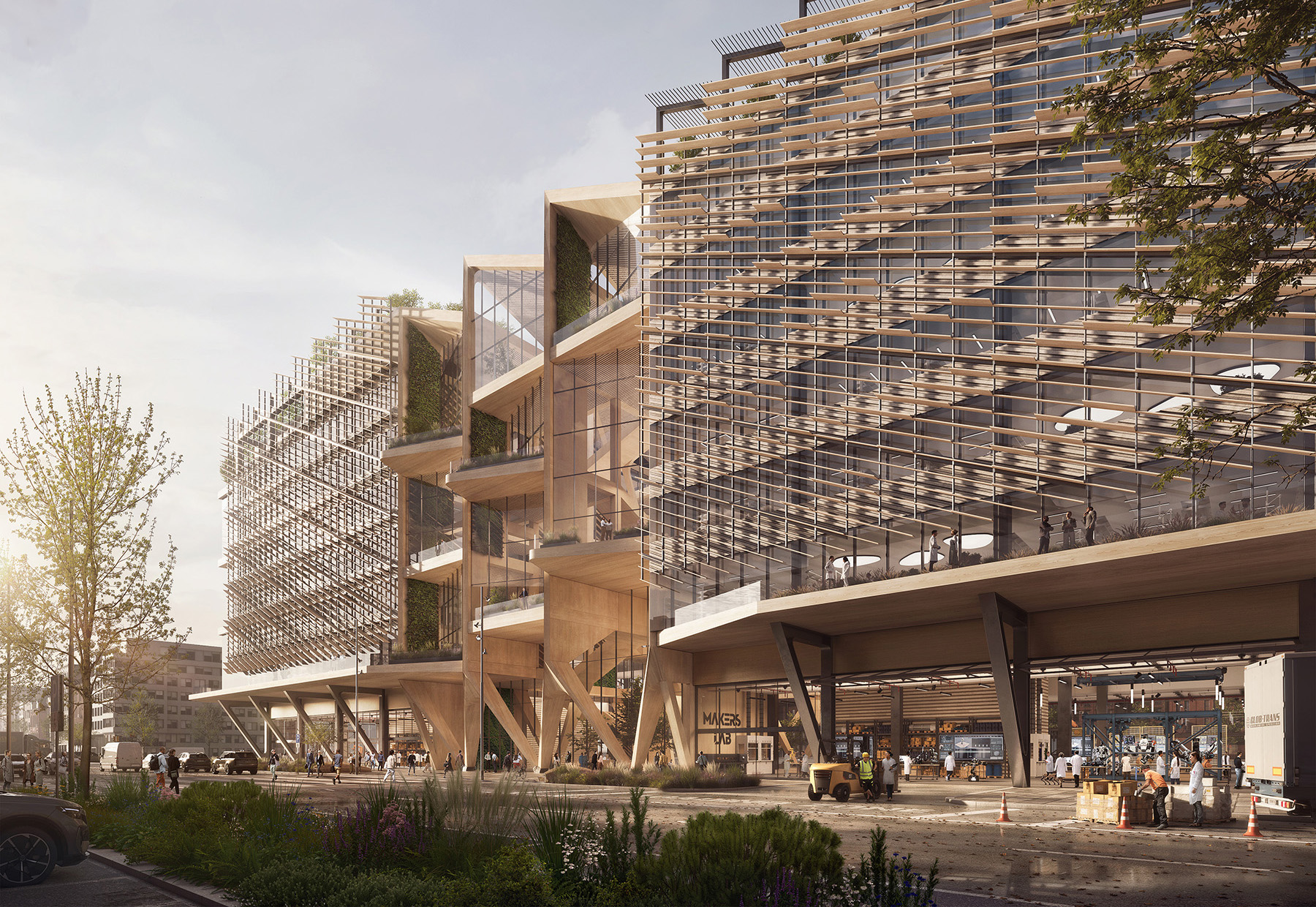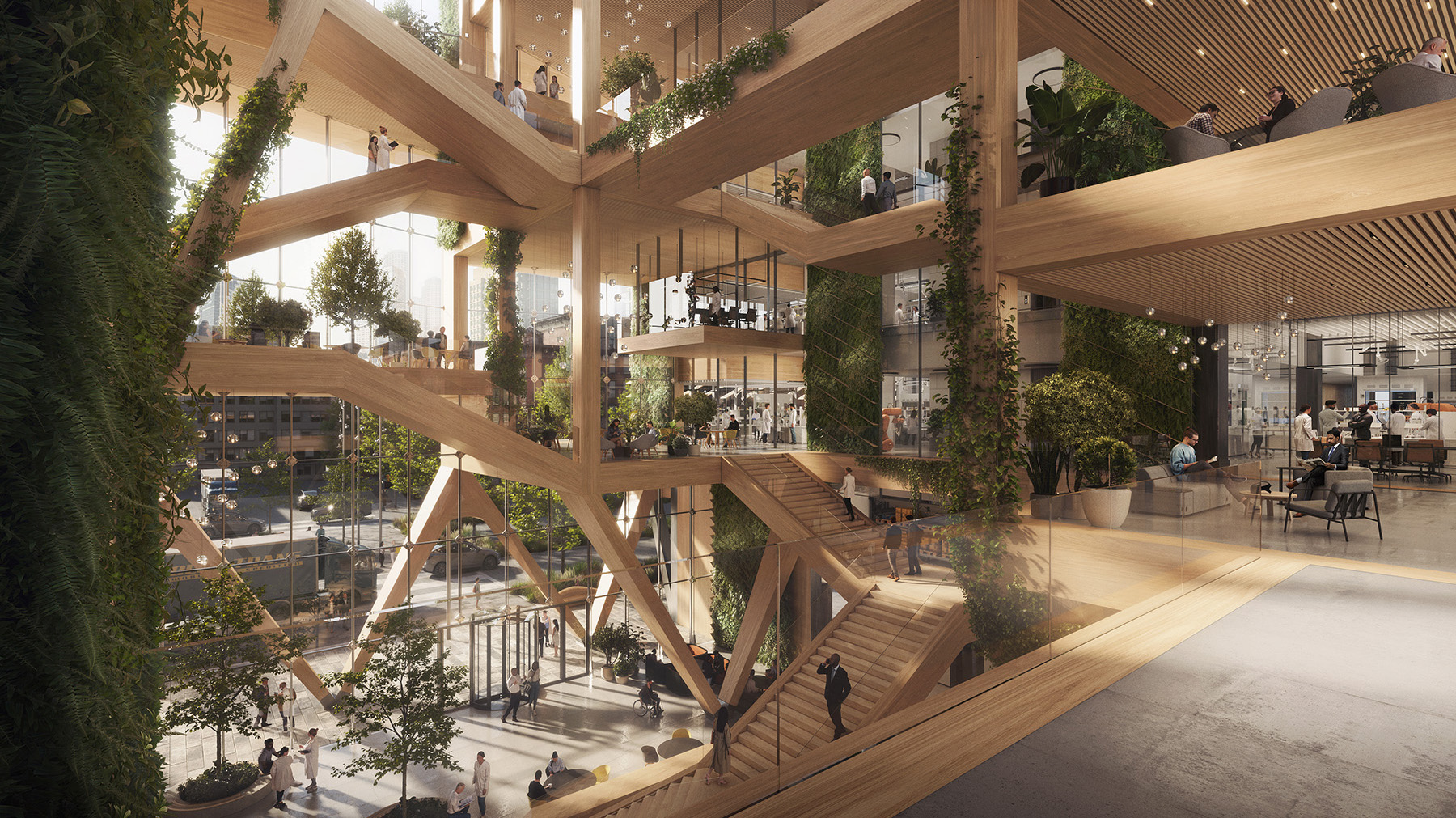
By David Jen
Specialized spaces such as science labs may tie entire buildings to the whims of market demands, risking obsolescence long before the end of the structure’s useful life. But global architecture, planning, and design firm NBBJ believes that modular designs could help hedge that risk, even as demands shift between different branches of science, or even from lab to office to residential uses.
The firm’s Regenerative Lab concept envisions a “flexible framework” for new-build labs. This framework could be adapted to varying demands if the buildings were no longer needed for scientific research, while also keeping the design centered on human experiences and cutting
embodied carbon through the use of timber, according to the NBBJ article, “The Regenerative Lab. A Building That Evolves with the Speed of Research.”
“Science is ever-changing, and research buildings are required to do more than ever,” per NBBJ. “The Regenerative Lab seeks to change the conversation and in doing so, help spur a new era of labs that can prosper today and tomorrow.”
The team created two hypothetical designs. The first is a steel superstructure that houses a modular system of slabs and infill structures made of cross-laminated timber. The wood elements can then be reconfigured later to meet the different needs of future occupants, according to the article. This hybrid approach allows for large spans in the lab spaces and maximizes future renovation flexibility.

The concept also includes how best to use the daylight-starved interior spaces that are typical of labs so that they can potentially be converted to residential use; storage or laundry-type facilities could take advantage of such areas.
The second approach designs the building “as a holistic mass timber and CLT system,” says NBBJ design partner Jay Siebenmorgen, AIA, LEED AP. This method would require a tighter grid and an adjustment of floor-to-floor heights to accommodate deeper beam depths.
In both scenarios, mass timber would be used for the open social spaces connecting, and sandwiched by, the lab zones at the building’s ends, as well as where vibration or ventilation are less of an issue, such as in the dry lab and write-up areas, Siebenmorgen says.
And the central atrium would offer a “daylit experience filled with plants and greenery” to support rejuvenation and stress relief, per the article.
Nationally, office space use has plateaued at around 50%-60% of pre-pandemic levels, as tenants have chosen to downsize their office footprints, a response to employees’ new remote-work expectations, according to a December office report from landlord-software provider CommercialEdge. About 18% of the country’s office space sits empty, with Detroit, Houston, and San Francisco leading in vacancy rates.
Lab spaces have stood out as particularly resistant to renovations for alternate uses when they are no longer needed for research. This is due in part to their robust ventilation requirements — which set minimum air-change rates and prohibit “return air” to control contaminants — and the power needs of specialty equipment, says Siebenmorgen.
“Evolving our thinking toward future use and how we retrofit from these substantial systems is the biggest challenge,” he continues. Design of the systems will also determine which building modules can transition independently over time.
The firm hopes the Regenerative Lab will spawn further ideas to address the post-lab usage issue of purpose-built science buildings. “The Regenerative Lab is a springboard concept — a provocation intended to explore ideas rather than a design meant to be inserted into a city as is,” according to NBBJ. “The principles reflected in the Regenerative Lab can be interpreted, adapted, (and) then applied on projects according to their specific climates, sites, and circumstances.”
David Jen is a freelance science journalist based in the San Francisco Bay Area.
This article is published by Civil Engineering Online. It appeared in the March/April 2024 issue of Civil Engineering as “Beyond Science.”



